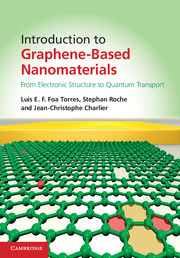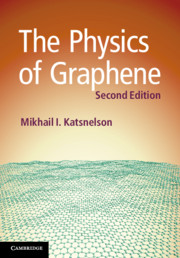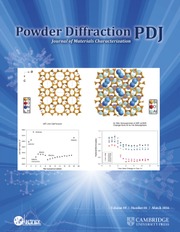Introduction to Graphene-Based Nanomaterials
Beginning with an introduction to carbon-based nanomaterials, their electronic properties, and general concepts in quantum transport, this detailed primer describes the most effective theoretical and computational methods and tools for simulating the electronic structure and transport properties of graphene-based systems. Transport concepts are clearly presented through simple models, enabling comparison with analytical treatments, and multiscale quantum transport methodologies are introduced and developed in a straightforward way, demonstrating a range of methods for tackling the modelling of defects and impurities in more complex graphene-based materials. The authors also discuss the practical applications of this revolutionary nanomaterial, contemporary challenges in theory and simulation, and long-term perspectives. Containing numerous problems for solution, real-life examples of current research, and accompanied online by further exercises, solutions and computational codes, this is the perfect introductory resource for graduate students and researchers in nanoscience and nanotechnology, condensed matter physics, materials science and nanoelectronics.
- Provides a deep exploration of quantum transport in disordered graphene-based materials
- Covers all members of the sp2 family (nanotubes, graphene ribbons, monolayer and multilayer graphene) as well as some chemical derivatives
- An excellent starting point for new researchers in the field
Reviews & endorsements
'Torres, Roche, and Charlier have written a very attractive book on graphene-based materials that takes a reader or student with no prior exposure to this topic to a level where he or she can carry out research at a high level and work in this area professionally, assuming a standard background of a condensed matter physics graduate student … All in all I would expect this to become a popular text for present and future researchers who will be active in the present decade, advancing science and launching technological innovation.' Mildred Dresselhaus, Massachusetts Institute of Technology
'This book covers the fundamental aspects of graphene, starting from the very beginning … The book should be useful not only for theoretical researchers but also for graduate students and experimental researchers, who will quickly understand the theorists' perspective. This book will be an important basic textbook on the physics of graphene.' R. Saito, Tohoku University
'… this is an excellent book for those interested in this special carbon-based material.' Dieter Vollath, MRS Bulletin
'The book assumes a basic knowledge of solid state physics on which they build an impressive edifice which houses careful treatments of the electronic structure and transport properties of graphene-related systems. … To underline the pedagogic role of the book the technical chapters contain exercises for the reader to explore. The authors also have made additional problems (and their solutions) as well as other material on-line. Overall this is an exceptional contribution to furthering graphene research, development and applications. It is to be hoped that the authors' many colleagues and collaborators will demonstrate their true appreciation of this achievement by ensuring that the growth in the sales of this book are as explosive as that of graphene research.' K. Alan Shore, Contemporary Physics
Product details
No date availableAdobe eBook Reader
9781107596481
0 pages
0kg
270 b/w illus. 30 exercises
This ISBN is for an eBook version which is distributed on our behalf by a third party.
Table of Contents
- 1. Introduction to carbon-based nanostructures
- 2. Electronic properties of carbon-based nanostructures
- 3. Quantum transport: general concepts
- 4. Klein tunnelling and ballistic transport in graphene and related materials
- 5. Quantum transport in disordered graphene-based materials
- 6. Quantum transport beyond DC
- 7. Ab initio and multiscale quantum transport in graphene-based materials
- 8. Applications
- Appendix A. Electronic structure calculations: the density functional theory
- Appendix B. Electronic structure calculations: the many-body perturbation theory
- Appendix C. Green's functions and ab initio quantum transport in the Landauer–Büttiker formalism
- Appendix D. Recursion methods for computing DOS and wavepacket dynamics
- Index.







